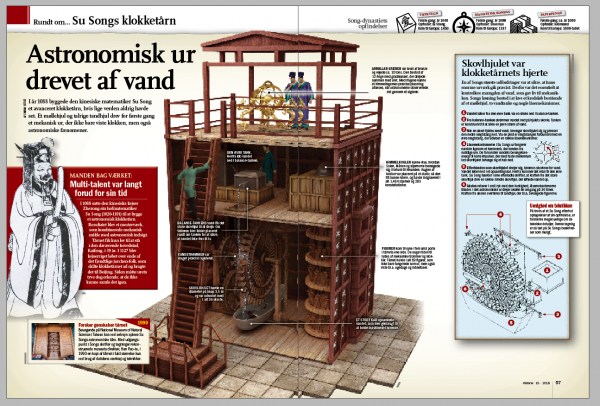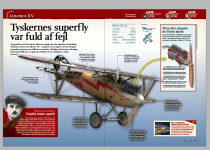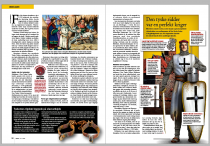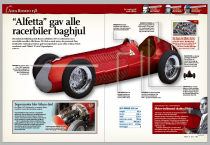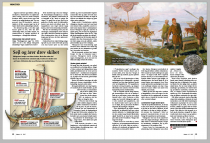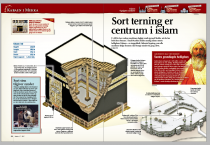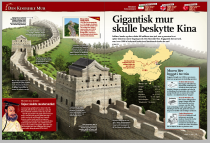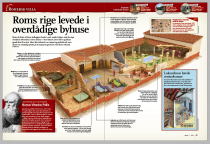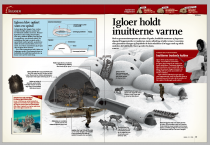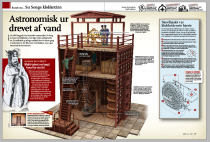Illustreret Videnskab Historie
-
Albatros D.V
The description of the Albatros D.V, the biplane fighter that the Germans commissioned in 1916 to counter Allied air superiority in World War I, appeared in the fixed section Rundt om (About ...) of the Illustreret Videnskab Historie magazine, owned by the Bonnier Publications group. From the original proposal, the editors used the central images: the airplane and the engine detail, in addition to the airplane profiles and the technical characteristics of the aircraft. As for the rest, they opted for other content more in line with their purposes. Tyskernes superfly var fuld af fejl (The German Supermachine Was Full of Flaws) was the title of the infographic. The Danish publishing comapny has in its catalog three other magazines with historical content: Militär Historia, Populär Historia and Släkt Historia.
Page(s): 28-29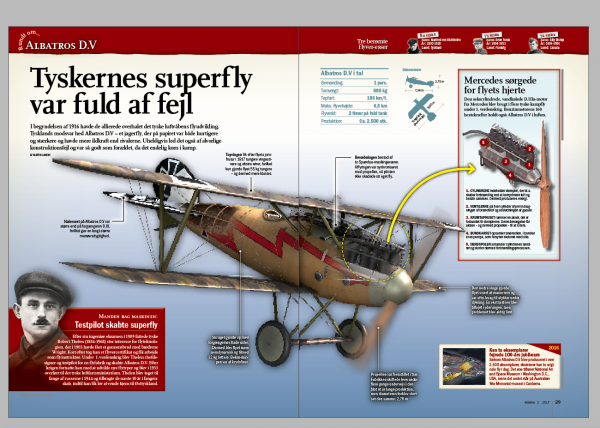
-
Teutonic Knight
Den tyske ridder var en perfekt kriger (The Teutonic Knight was a Perfect Warrior) is the title of the infographic that shows the weaponry of one of the members of this military order that appeared, along with others, in the 12th century to combat in the Crusades against Muslims in the Holy Land and in the Iberian Peninsula, or against the pagan peoples of Eastern Europe. The image is part of an article in the Danish magazine Illustreret Videnskab Historie, dedicated to the Teutonic knights and to their expansion through the Baltic territories, where they established a powerful State in the Middle Ages. From the original infographic on the Crusaders, the editors could select the image that best suited their needs.
Page(s): 51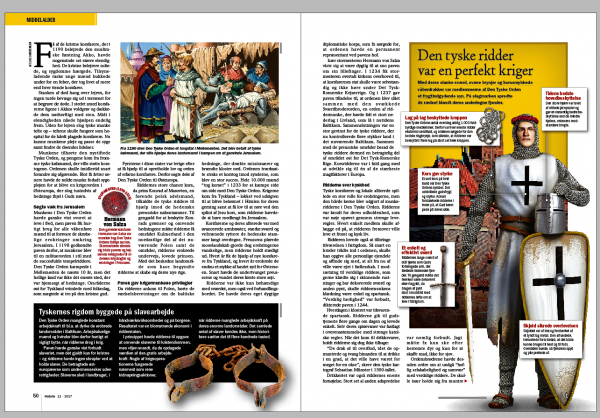
-
Alfa Romeo 158 "Alfetta"
In its graphic section Rundt om… (About…), Illustreret Videnskab Historie magazine also has space for historical sporting events, as evidenced by the inclusion of the Alfa Romeo 158, popularly called "Alfetta", a racing car with exceptional performance, which, driven by the Italian Nino Farina and by the Argentine Juan Manuel Fangio, won 47 of the 54 grand prixs in which it participated. The attractive vehicle design and the rear view section were the only elements used from the original infographic.
Page(s): 60-61
-
Viking Drakkar
The client enriched the image of a Viking drakkar by incorporating a translucent bluish color pattern on the deck to represent the canvas with which the center of the boat was enabled as a rest or shelter area. The Danish history magazine Illustreret Videnskab Historie published this image of the Viking ship, which served to illustrate a feature of this Scandinavian people that ravaged the coasts of all Europe from the 8th to 11th century, founded kingdoms and dynasties, and discovered new territories such as Iceland, Greenland and the American continent.
Page(s): 68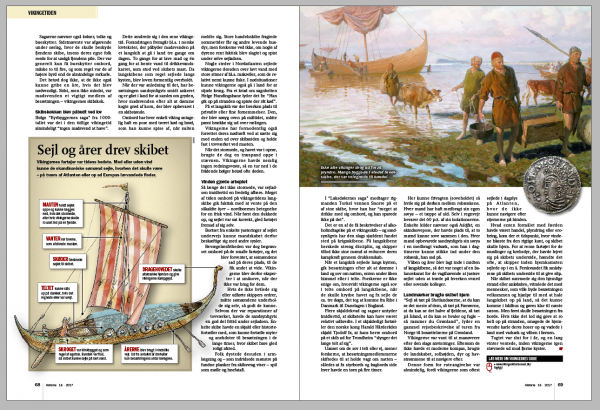
-
Kaaba
The Kaaba site, a cube-shaped construction located in the large inner courtyard of the Masyid al-Haram Mosque in Mecca, the holy city of Islam, was published by the Danish history magazine Illustreret Videnskab Historie in its classic section Rundt om… (About…). Inside the Kaaba there is a black stone (probably a meteorite), considered a relic. According to the Koran, the Kaaba was built by Abraham and his son Ishmael, father of the Arab people and ancestor of Muhammad and of the Muslim faith.
Page(s): 64-65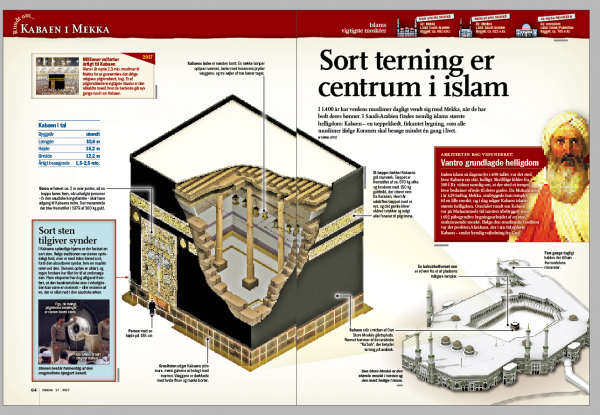
-
Himeji Castle
Himeji Castle is one of the most requested infographics about Japan when it comes to reporting on the long Tokugawa (or Edo Period) shogunate, which closed the country to foreign influence from 1600 to 1868, or the Samurai. On this occasion he presides over the pages of the section Rundt om... (About...), of the Danish history magazine Illustreret Videnskab Historie under the title: Japansk borg skulle forvirre fjenden (The Japanese Castle that Confused Its Enemies), in allusion to the labyrinthine layout of its defence systems. The sheet includes other pieces produced by the client. These are those referring to Ikeda Terumasa, the daimyo who designed it; to the aforementioned defensive labyrinth; to the seppuku (ritual suicide); to the troops who guarded it, and to three other fortresses of the time, in Hikone, Inuyama and Matsumoto. Himeji Castle has been a World Heritage Site since 1993.
Page(s): data not available
-
Great Wall of China
Invaded by successive waves of Central Asian nomadic peoples, China built a great wall to protect itself from their aggressions. In its graphic section Rundt om... (About...), the Danish history magazine Illustreret Videnskab Historie used the central image and drawings from the construction phases of the original infographic. The Great Wall of China is 8,851 km long. Its construction began in the 5th century B.C. and lasted until the 16th century. UNESCO declared it a World Heritage Site in 1987.
Page(s): 34-35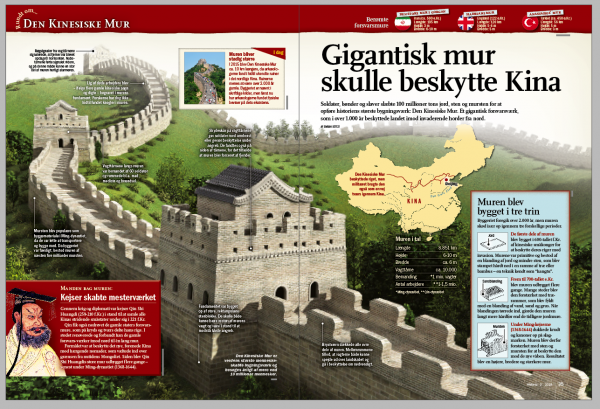
-
Roman Villa
The infographic of the Roman villa is the axis of this sheet of the fixed section Rund om... (About...) of the Illustreret Videnskab Historie magazine, from Denmark. Around it, the editors added other elements such as the profile of the Roman architect Marcus Vitruvius Pollio, the presence of central heating in the most luxurious houses, several examples of the ruins of Roman villas, and a current note about a new discovery of a Roman villa in France in 2017.
Page(s): 48-49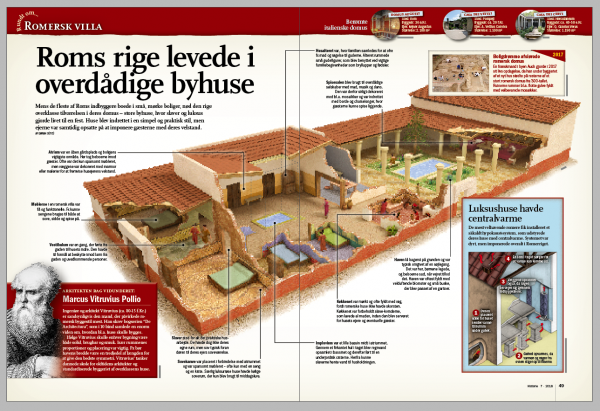
-
Igloo
There is no doubt that the Inuit (or Eskimo) people constitute an exceptional model of adaptation to the most extreme climatic conditions. The igloo is one of the key pieces of their survival and their triumph over the Arctic ice. The Illustreret Videnskab Historie magazine, published in Denmark (where Greenland, home to a large Inuit community, is a government agency), chose the infographic of Infographics90 to illustrate the theme of the Inuit's ice dwellings in Rundt om... (About...), a fixed graphic section of this historical publication. In addition to the igloos, the graphic depicts other media typical of the Inuit community, such as kayaking and dog sledding. The peripheral pieces are contributions from the editorial staff of Illustretet Videnskab Historie.
Page(s): 38-39
-
Su Song Astronomical Clock
Rundt om... (About...), a fixed graphic section of the Danish historical magazine Illustreret Videnskab Historie, dedicated this time its double page to the inventions of medieval China; specifically, to the astronomical clock of Su Song (1020-1101), which, in addition to marking the hours by striking a carillon, pointed out the location of the moving planets on an armillary sphere located at its peak. Only the central piece, the clock, is part of the original infographic. The rest (the inventions of the Song Dynasty – printing types, compass and coin paper –, the mechanism of the carillon, the historical note on the invention and the current note, dated 1990) is the work of the client.
Page(s): 56-57